Projectsl businesses and even life itself are defined by a series of decisions. Each decision should, ideally, be the result of thorough research, counseling from the team and historic data. Managers use a decision log to keep stakeholders updated on who authorized a decision and how it came about.
A decision log is a critical communication tool that all project managers, business managers, team leaders and decision-makers of any kind need to understand. You can use project management software, templates or simply a notepad to track decisions. But before we get into how to make one, let’s better understand the definition of a decision log.
What Is a Decision Log?
A decision log is a record of decisions that lead to a choice you make during a project, business process or any kind of organizational activity. It can be meeting information, a record or a document of the project—it’s all compiled in a decision log and passed on to the project sponsor.
Communication problems are death to any type of team. A decision log serves as a communication tool that delivers supporting information to stakeholders. Decisions don’t just happen in scheduled meetings: they can also be made in casual meetings or at any moment, as businesses and project teams need to quickly respond to risks, changes, industry disruptions or larger economic and political phenomena. A decision log documents all of that information.
A decision log, therefore, is a list of critical decisions that have been agreed upon.
While the project decision log is mostly used by a few key members of a project team or board of executives, it has definitely been gaining traction in the wider organization.
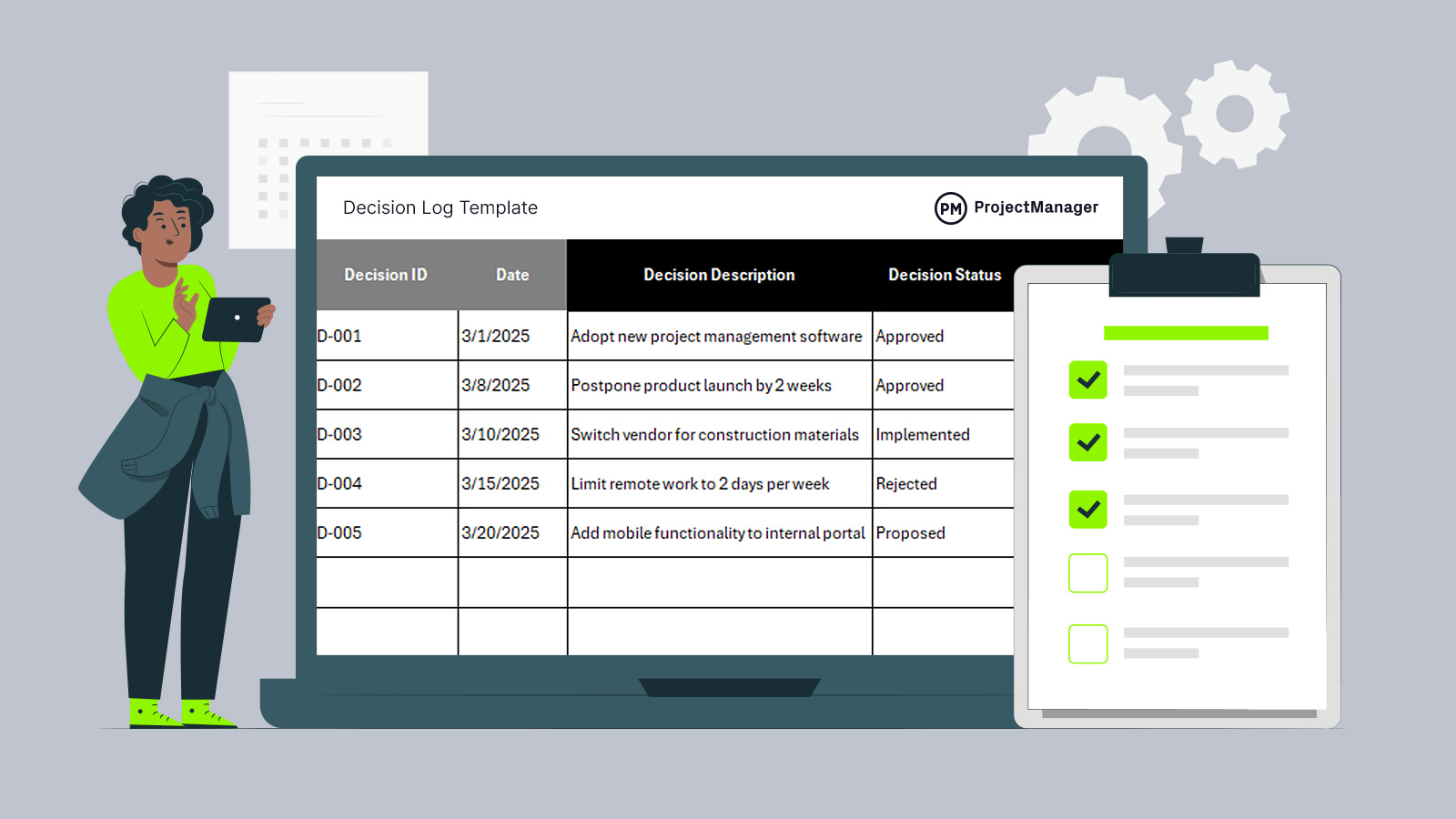
Get your free
Decision Log Template
Use this free Decision Log Template for Excel to manage your projects better.
Who Should Use a Decision Log?
A decision log is a valuable tool for any individual, team or organization that needs to track decisions, maintain accountability and ensure clarity across processes. While it’s often associated with project management, its usefulness extends to fields such as operations, product development, event planning, IT, education and even healthcare administration. Anyone responsible for making or implementing decisions—such as team leaders, department heads, consultants or committee members—can benefit from documenting what decisions were made, why they were made, and what outcomes are expected.
In collaborative environments, decision logs help ensure alignment and prevent miscommunication by providing a single source of truth that all stakeholders can reference. For organizations undergoing change, implementing new systems or managing complex initiatives, decision logs serve as a historical record that supports transparency and informed future planning. Whether you’re part of a nonprofit organization, small business, academic institution or enterprise-level corporation, using a decision log can strengthen communication, reduce redundancy, and improve overall decision-making efficiency. Below are a few examples of professionals who use a decision log.
- Project Management: tracking decisions across a project lifecycle
- Business Strategy: documenting executive decisions and rationale
- Product Development: logging product feature or roadmap choices
- Change Management: capturing decisions about organizational changes
- IT Governance: logging system architecture, vendor, or security decisions
- Legal and Compliance: ensuring traceability for audit purposes
Why Do You Need a Decision Log?
Decisions can make or break a project or business. Stakeholders have a vested interest in the decisions that have been made. Just as they are updated regularly with stakeholder presentations and status reports, a decision log explains why decisions were made and who authorized them.
Documentation is key for managing projects and business operations, and while the mainstream project and business management world might not have yet fully embraced the decision log, they have used thorough documentation forever. Documentation offers historic data necessary to plan future projects and also acts as part of a risk management plan when looking at decisions.
A decision log can merely be a reminder of the course of action. There are many decisions made during the life cycle of a project or managing the operations of a business and sometimes people on any team need a reminder to avoid unnecessary conflict. It also explains who made that decision and why, which can help keep the team from disagreeing.
Having a decision log be the one source of truth, accessible to all and easy to share with stakeholders is essential to running a successful project or business. ProjectManager is online software that connects hybrid teams, managers and stakeholders with a real-time work management tool.
Keep your project decision log, change log, issue log, risk log, action log, raid log, risk register or any log you use on the task list view of our software. You can attach files, share them with the team and get notified as new items are added. Join the 35,000-plus users worldwide and get started free with ProjectManager today.
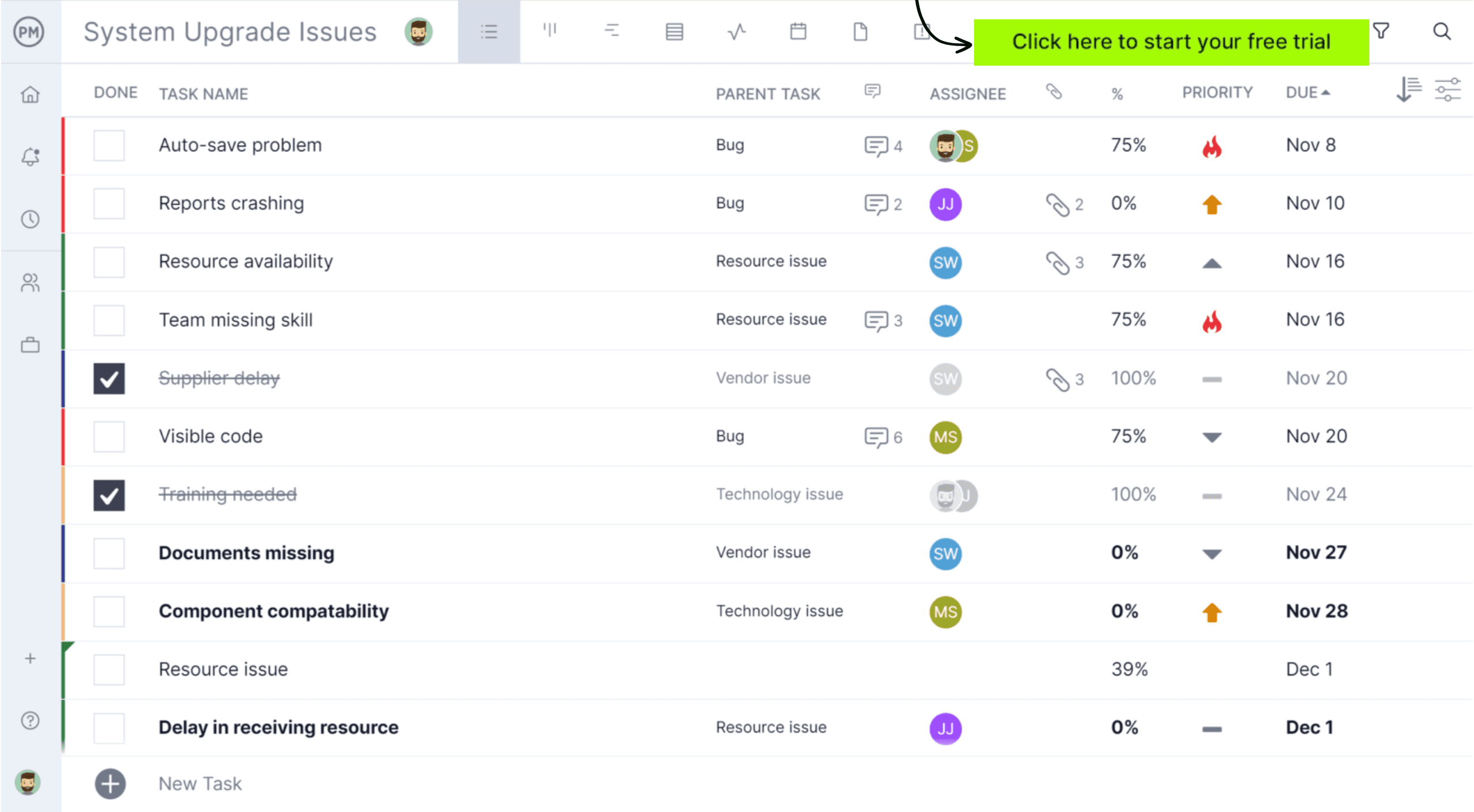
What Should Be Included in a Decision Log?
A decision log helps with change analysis because it captures key decision-making data. Basically, it’s like a spreadsheet. Each column notes a specific part of the decision. Here are some of the items that should be included in any decision log:
- Project name: Keeps all the decisions made in the project together
- Project manager: The person in charge
- Identification number: Assign one to each decision to make it easier to refer to
- Decision Title: Titling a decision differentiates it from others made over the life cycle of the project
- Date: When you made the decision and any deadlines related to it
- Area: Which aspect of the project you’re discussing
- Description: An overview of the decision you’ve made
- Rationale: The reason for the decision and any comments or disagreements cited
- Alternatives: Other options you discussed but decided against
- Expected impact: Briefly outline what you think the decision will change
- Contributors: List everyone who contributed to the decision
- Approval signature: The sign-off, usually from the project manager
Decision Log Example
Let’s make up a theoretical case to go through the process of making a decision log for a project. For our decision log example, let’s contemplate a construction site that is wondering whether to use steel or wood when framing a smaller backhouse to the larger building.
The decision log would have all the data detailed above, such as the project name, the name of the project manager, an ID and the title could be something like “Backhouse Frame.” The people involved would be the project manager, architect and contractor at a minimum.
The discussion might be about price versus safety. Collect these pros and cons and add them to the project decision log. Explore the impact and alternatives, such as how steel would impact the budget and wood might require extra stabilizing elements. It’s a way to go through the best practices and see which is most suited for the project. In this case, the first entry of the decision log could look like this.

Make a decision, jot it down in the log and have the project manager sign off. Here’s how the decision log would look at the end of the project.
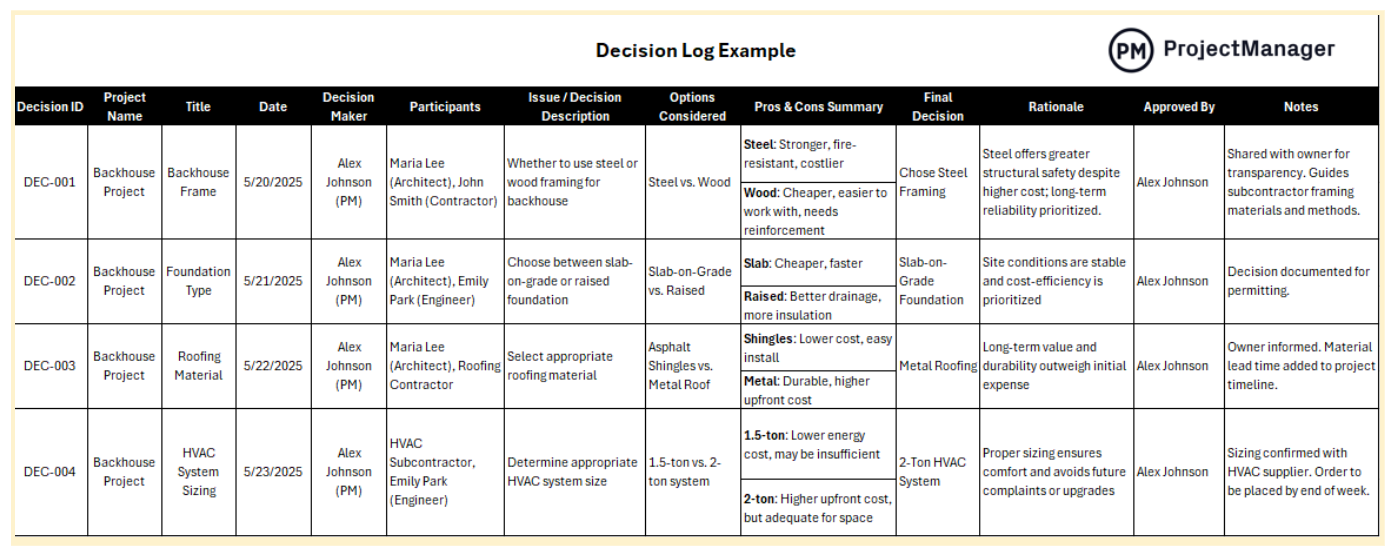
Then, deliver the document to the stakeholders of the project, say the owner of the property who contracted the work. This gives stakeholders context for the discussion and decision, as well as guides the subcontractors when making the structure.
Benefits of Using a Decision Log
A decision log offers a structured way to document critical choices made throughout the life of a project, initiative, or organizational process. By maintaining a centralized record of decisions, the log helps create transparency, consistency and accountability. This tool not only streamlines communication but also provides a historical reference that can guide future actions and prevent repeated mistakes. It’s an essential asset in both day-to-day operations and strategic planning.
Facilitates Communication with Stakeholders
A decision log ensures that stakeholders remain informed about key decisions, including the rationale and implications behind them. This reduces confusion, aligns expectations and supports trust between team members and stakeholders.
Supports Change Management
In change management processes, a decision log tracks when and why changes were approved, making it easier to implement and communicate changes across teams while maintaining control over scope and objectives.
Helps with Future Decision-Making
By serving as a knowledge base of past decisions, a decision log can guide current teams in making informed choices and avoiding previously encountered pitfalls, improving overall decision quality.
Holds Decision-Makers Accountable
Recording decisions with associated dates, reasons, and responsible individuals adds a layer of accountability that encourages thoughtful, transparent decision-making practices.
Can Be Used as Input for Project or Business Audits
Decision logs provide clear documentation that can be invaluable during internal reviews, audits or evaluations, offering traceability and justification for significant actions taken.
Enables Knowledge Transfer for Transition Plans or Project Handovers
When team members leave or projects change hands, a decision log helps new personnel quickly understand the context and reasoning behind previous decisions, ensuring continuity and smoother transitions.
How to Use a Decision Log
Use a log whenever there’s a decision made in the project or when running a business or team of any kind. That doesn’t necessarily mean minor decisions, but the more the better. Include any decision that has an impact on the project. Chances are, stakeholders will get upset at some point and demand to know why this, that or the other thing was done. The decision log is a way to communicate to them and also support the decision.
Therefore, a project decision log is not important as you are writing it, but more so when you are put in a position to defend your decision. If you are challenged or a decision is questioned, the log is there to back you up.
If a decision log is revised, it should be noted in the decision record. You want to document that decision as well. Explain why the decision was made and why it was changed. Then, update the log and create a new one reflecting the change.
Decision Log Template for Excel
Download this free decision log template to record important decisions made during the course of a project, business process or organizational initiative. It includes fields such as the date of the decision, decision description, individuals or teams involved, rationale, impacts and any follow-up actions or notes. The goal is to maintain a clear and accessible record of key choices, helping teams stay aligned and informed throughout a project’s lifecycle.

Using a decision log template is especially valuable in complex projects, collaborative environments, or long-term strategic planning efforts. It promotes transparency, reduces miscommunication and can serve as a reference for future decision-making or audits. By formalizing how decisions are documented, the template helps avoid knowledge loss when team members leave and supports accountability by clearly associating decisions with responsible parties. Overall, a decision log template enhances organizational memory and empowers teams to make better, more informed choices over time.
More Decision Log Templates
You can make a decision log yourself on any spreadsheet or even word processing app, but there are lots of free decision log templates that lay it out for you if that’s easier. Here are a few of the more popular ones we found online.
Decision Tree Template for Excel
Use this free decision tree template to map out decisions and their possible consequences, including risks, rewards and subsequent choices. Shaped like a tree, it starts with a primary decision or problem at the root, branching out into different options and further dividing into outcomes based on each choice. Each node represents a decision point or possible outcome, making it easy to follow a logical path through complex scenarios.
Decision Matrix Template for Excel
This free decision matrix template is used to evaluate and prioritize multiple options based on specific criteria. It helps individuals or teams make objective, data-driven decisions by assigning scores or weights to various choices against a set of relevant factors. The matrix includes rows for each option and columns for each criterion, with a scoring system applied to determine the best overall choice.
SampleTemplates
SampleTemplates has over nine different decision log templates for PDF and Word. They cross a number of different industries, so you should be able to find the template that fits your particular needs.
WordTemplatesOnline
WordTemplatesOnline has free decision log templates for Excel, Word and a PDF. They offer a variety of different log templates for various kinds of business meetings, such as guidelines and principles for retirement plans, one that captures key decisions and risks and others that include priority, status and more.
Of course, templates are static and can’t be used for effective collaboration. Rather than use a decision log template, it’s better to use software to manage your decisions and track your project changes.
How ProjectManager Helps With Decision Logs
ProjectManager is cloud-based work management software that connects hybrid teams and helps them work more productively. With multiple project views to suit everyone’s work style and real-time data to foster collaboration and better monitor projects, ProjectManager is also a great way to track decision-making.
Use Dashboards to Track KPIs
Before you can make a decision, you need data to give you better insight into the problem. ProjectManager’s real-time dashboard and one-click reports collect project metrics automatically. The dashboard tracks time, cost, workload and more, giving you an instant status report.
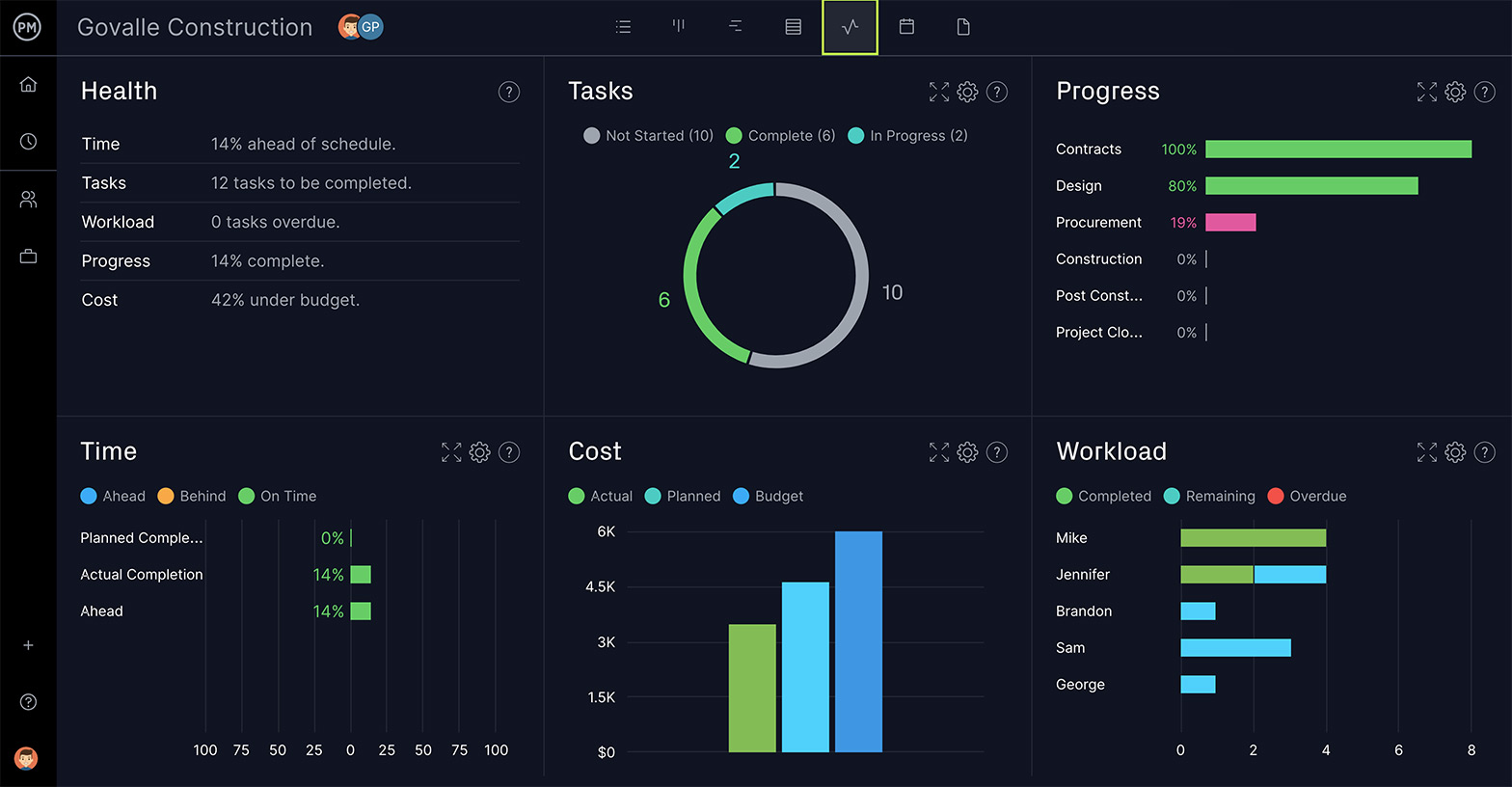
Create Visual Workflows with Kanban Boards
Instead of using a static template as your decision log, use the kanban board view. A kanban board is a visual tool that shows workflow. You can set up each column as one of the categories on your decision log and the cards can capture the relevant data. Then, you can use the feature to assign and track the progress of that change after it’s been authorized.

Follow Your Plan on Gantt Charts
In fact, you can plan all the changes made to your project with ProjectManager’s Gantt chart. Just toggle from the kanban to the Gantt chart view and you’ll see the work laid out on a project timeline. Now you can add dependencies, filter for the critical path and set a baseline to track your planned effort against your actual effort.
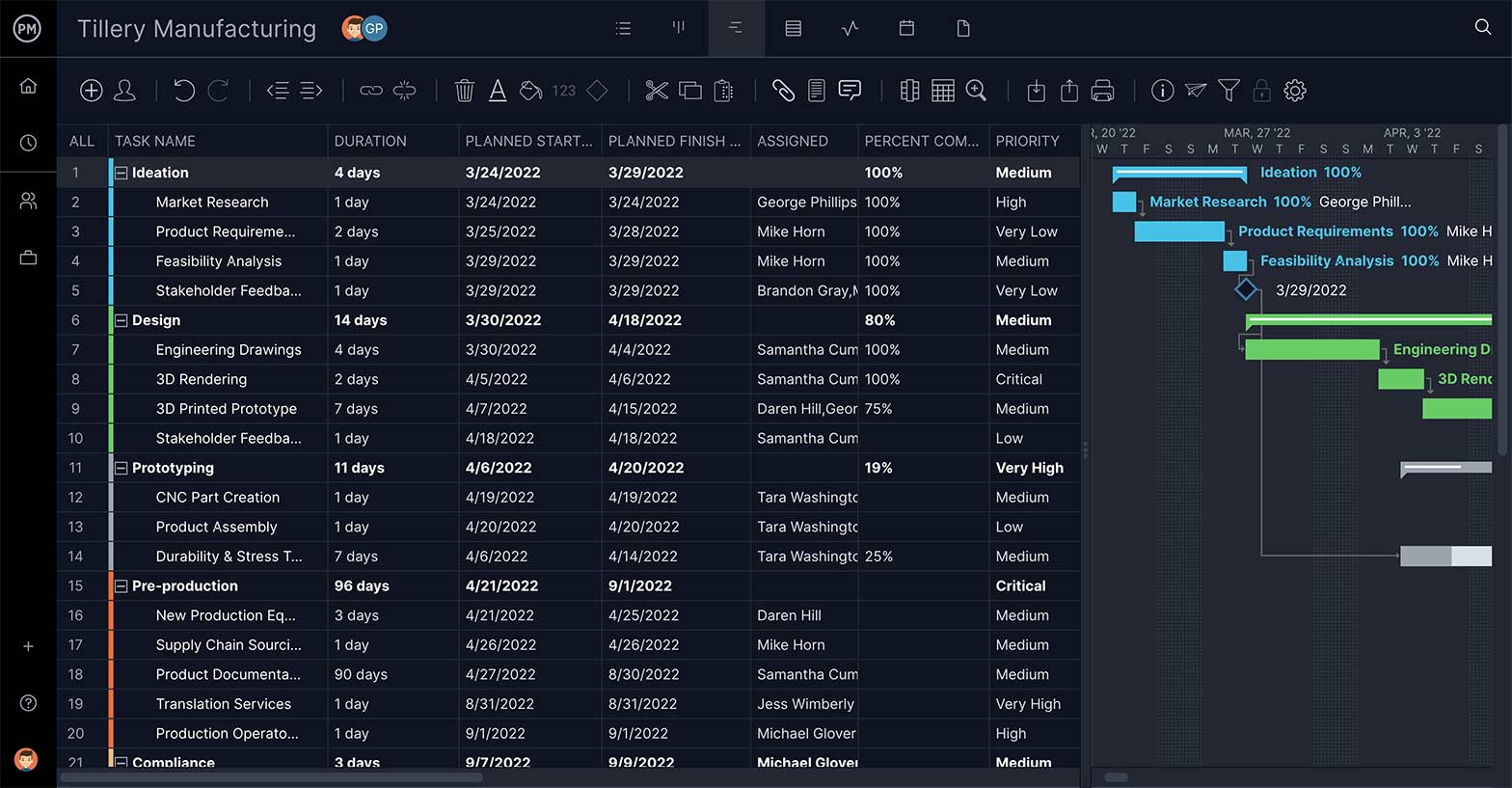
Related Decision-Making Content
For those looking to read more about decision making, check out the links below. They lead to recent articles published on our blog that cover using a decision flowchart, DACI and more.
- What Is a Decision Matrix? (Example & Template Included)
- Using a Decision Flowchart in Project & Process Management
- Decision Tree Analysis in Project Management & Strategic Planning
- DACI: A Decision Making Framework for Better Group Decisions
ProjectManager is award-winning software that connects teams no matter where they are, what department they work in or their skill level, and gives them the tools to work better together. Our work management software has resource management tools, timesheets and more to help you work more efficiently. Join teams at NASA, Nestles and Siemens who already are using our software. Get started with ProjectManager now.

